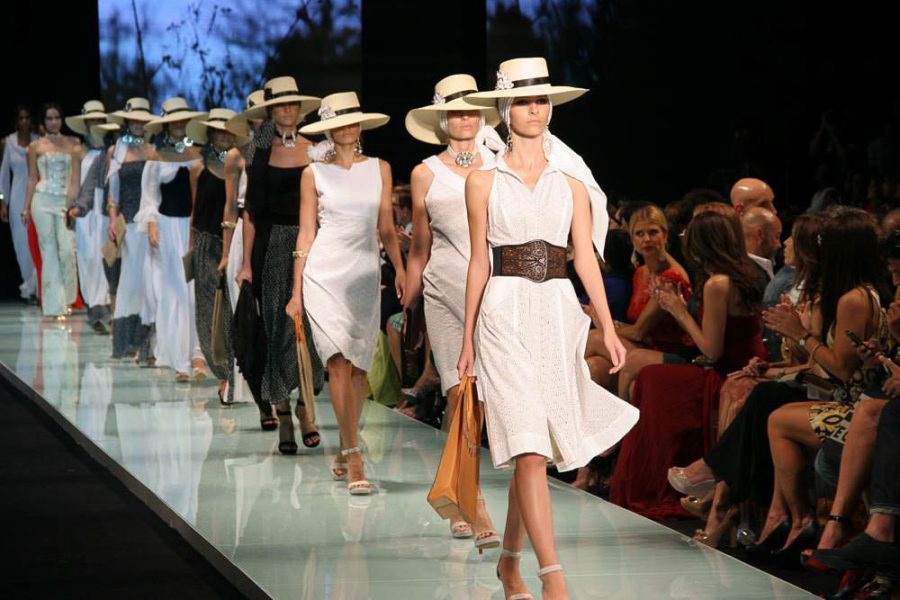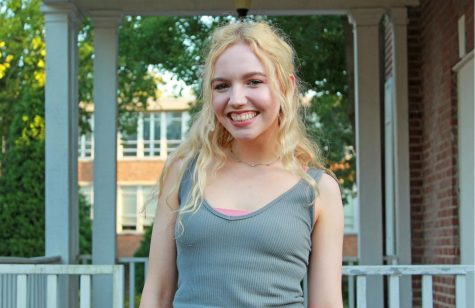Rowland: QAnon sparks conversation about pedophilic beauty standards
Miami Fashion Photographer James Santiago, CC BY-SA 4.0, via Wikimedia Commons
Models are often portrayed as the standard of beauty for women.
January 28, 2021
Do you dread the physical toll of getting old? If you answered yes, you have internalized modern beauty standards. Questions like these are important to ask oneself in the modern age, for the odd constructs that constitute “beauty” in the 21st century come from a darker source than we would like to believe. At the heart of all modern female beauty standards is pedophilia. This is rarely talked about but abundantly evident. If women consider the expectations we are meant to uphold, we can’t help but realize why we are supposed to look a certain way.
Pedophilic influences upon society have been brought up recently by QAnon’s pedophile ring conspiracy theories, as they believe, “that national Democrats, aided by Hollywood and a group of “global elites”, are running a massive ring devoted to the abduction, trafficking, torture, sexual abuse and cannibalization of children, all with the purpose of fulfilling the rituals of their Satanic faith.” While these right-wing extremists are using child abuse as a political tactic to further their demonization of progressive ideas, they are correct that pedophilic influences are more rampant than they appear, and that they are mainly introduced by pedophilic men in powerful positions.
QAnon may not have meant to spark a conversation about pedophilic influences in society and pop culture and the beauty world through their theories about drinking blood and cannibalization, but they did so nonetheless.
Current beauty standards are unattainable for a reason; the current characteristics of beauty are found in children, not adult women. Take models for example. They are forced to maintain the body of a prepubescent girl: flat, incredibly skinny and lanky. They do not hold the common characteristics of an adult woman; they do not have wide hips or a stomach or a large bust size.
A modeling career only lasts while a model is young; once the appearance of youth has left a model she is out of a job. As models are viewed as the pinnacle of beauty, women worldwide develop complexes about their weight. Adult women shouldn’t be comparing themselves to the bodies of prepubescent children.
We are told to shave our entire bodies, that body hair is vile and unattractive when every single adult woman grows it. They want us to resemble prepubescent children; they do not want us to resemble grown women. Even the emphasis on clear skin points toward pedophilia, as children do not develop acne, only teenagers and adults do.
School-girl uniforms are fetishized in this age, a reminder of how deeply pedophilia runs in the fabric of our lives. We are told to look young, to start putting on anti-aging skincare in our teens, to fear the effects of aging. We as women are forced into being children again, into preserving the look that pedophiles desire most.
Another example is the ingrained belief that a man should always be taller than a woman during a relationship and should never have a smaller build than the woman. This stems from the emphasis on a power complex and a more dominant male being in control of a woman. This concept comes directly from grooming (conditioning a child into relying on and trusting a pedophile).
Whether you want to admit it or not, there is a subconscious influence of pedophilia in every facet of modern beauty standards in our modern society. While this sociological commentary cannot be proven through experiments as a studied theory could be, the links between pedophilia and current beauty standards remain. Current conspiracy theories propagated by QAnon about pedophilia are bizarre and untrue, but some of the links they show between men in power using their influence to further pedophilic ideas are true.









